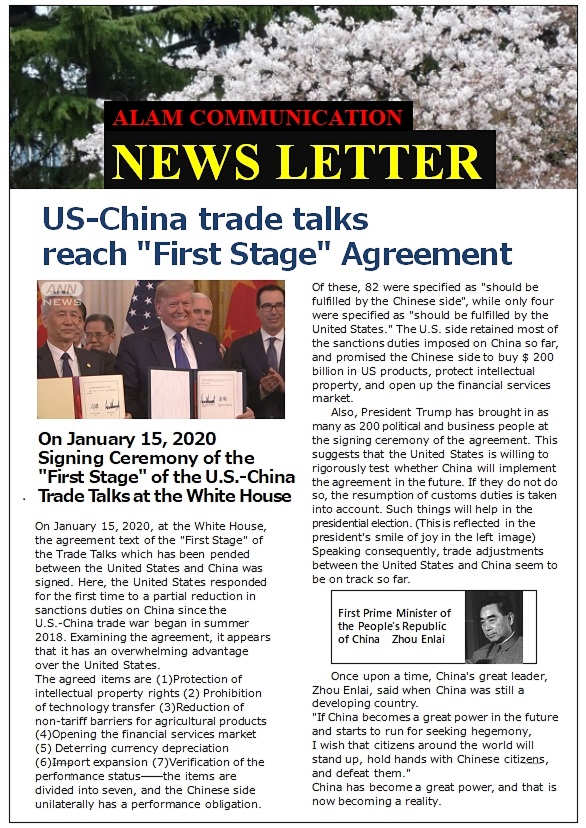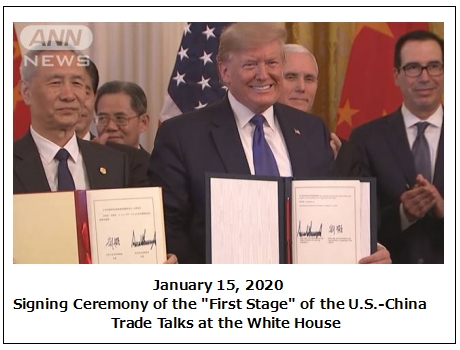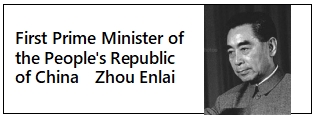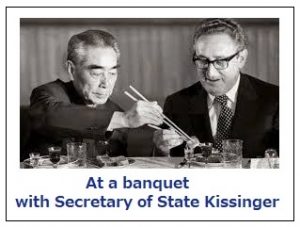
The letter of NEWSLETTER (above) is
small, so the contents is posted below.
US-China trade talks reach
“First Stage” agreement

On January 15, 2020, at the White House,
the agreement text of the “First Stage” of
the Trade Talks which has been pended
between the United States and China was
signed.
Here, the United States responded for the
first time to a partial reduction in sanctions
duties on China since the U.S.-China trade
war began in summer 2018.
Examining the agreement, it appears that
it has an overwhelming advantage over the
United States.
The agreed items are:
(1) Protection of intellectual property
rights
(2) Prohibition of technology transfer
(3) Reduction of non-tariff barriers for
agricultural products
(4) Opening the financial services
market
(5) Deterring currency depreciation
(6) Import expansion
(7) Verification of the performance
status
――the items are divided into seven, and
the Chinese side unilaterally has
a performance obligation.
Of these, 82 were specified as
“should be fulfilled by the Chinese side”,
while only four were specified as
“should be fulfilled by the United States.”
The U.S. side retained most of the
sanctions duties imposed on China
so far, and promised the Chinese side
to buy $ 200 billion in US products,
protect intellectual property, and open up
the financial services market.
Also, President Trump has brought in
as many as 200 political and business
people at the signing ceremony of the
agreement. This suggests that the United
States is willing to rigorously test whether
China will implement the agreement in
the future. If they do not do so, the
resumption of customs duties is taken
into account. Such things will help in the
presidential election. (This is reflected in
the president’s smile of joy in the above
image)
Speaking consequently, trade adjustments
between the United States and China seem
to be on track so far.


Once upon a time, China’s great leader,
Zhou Enlai, said when China was still
a developing country.
“If China becomes a great power in the
future and starts to run for seeking
hegemony(1), I wish that citizens around
the world will stand up, hold hands with
Chinese citizens, and defeat them.”
China has become a great power, and
that is now becoming a reality.
(1) Hegemony and Royalism
Two major political ideas built around
Chinese Confucianism. It has been
traditionally found in China since
ancient times.
Hegemony determines a response to
another nation only based on its own
pragmatic interests and carries out
an invasion war or first strike against
an adversary. A country that exercises
hegemony is called “Hegemonic nation.”
Royalism is the opposite, it refers to the
idea of using the virtue of Jin(仁) and
righteousness to calm the revolt world,
bring order to society, and bring stability
to the people. Call it Royalism.
Its characteristic is to present concrete
methods for realizing it, assuming moral
politics.




